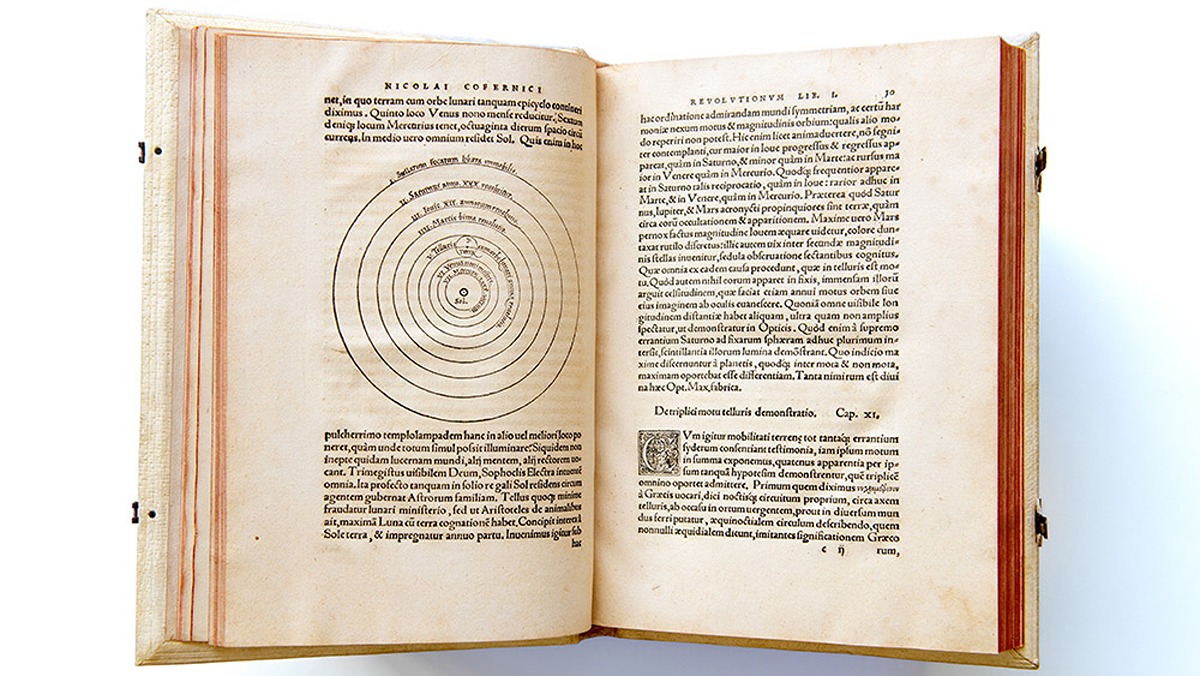
There might be an undiscovered treatise hidden within a Renaissance astronomy book.
One of two astronomy books recently donated to the Rochester Institute of Technology (RIT), located west of Buffalo in New York State, appears to be a palimpsest — a work written over top of previous material, which has been partially or entirely erased.
Vellum, or fine parchment made from animal skins, was a pricey material in the Renaissance. Sometimes, parchment was reused to save money. Astronomy experts suspect that an older text is lurking beneath the words of the donated book, a 15th century version of a work by 13th century scholar and monk Johannes de Sacrobosco. RIT imaging science students will try to decipher the erased words, according to university officials.
The other donated book is a famous work by Polish astronomer Nicolaus Copernicus from 1543. Copernicus showed by mathematical proofs and sky observations that the sun — not Earth — is the center of our solar system, generations before the telescope was invented in the early 17th century. (Copernicus also suggested the sun was in the center of the universe, which was later disproved as technology and mathematical calculations improved.)
Related: Our solar system's planets aren't weird after all. Exoplanets have tilted orbits, too
"My family ... agreed that we wanted the precious texts to live somewhere they would be actively studied and used, rather than sold to a private collector," stated donor Irene Conley, whose late brother Martin Harris was a student at RIT in the mid-1960s. "When the books arrived at RIT, I was so pleased to learn that students were carefully unwrapping them and that the plan is to use them for advanced work and research."
As a set, the books demonstrate how quickly astronomical science shifted in the Renaissance. In Sacrobosco's day, his Latin language book "De sphaera mundi" ("On the Sphere of the World") put Earth at the center of the universe, following a model suggested 12 centuries before by Alexandrian astronomer Claudius Ptolemy.
In the 16th century, Copernicus was part of a growing group of astronomers convinced that the sun is at the middle of things. While not the accepted view by society — the Catholic Church was among the groups backing an Earth-centered cosmos — he used a long-standing "existing line of thinking," the U.S. Library of Congress (LOC) emphasized in an analysis of Copernicus' work.
For example, the ancient Greek astronomers Plato and Eudoxus knew that Mercury and Venus always stayed close to the sun, based on science work conducted more than a millennium before the Renaissance. Numerous models in the intervening centuries had proposed varieties of solar system types, such as Aristarchus of Samos' heliocentric universe. Alternatively, Martianus Capella postulated in the fifth century that Earth was the center of the universe, but that Mercury and Venus orbited the sun.
"Although not part of the mainstream, these were all ideas that Copernicus built upon," the LOC statement added. The astronomer in fact waited about 30 years to publish his work, known as "De revolutionibus orbium coelestium" ("On the Revolutions of the Heavenly Spheres"), to avoid controversy.
But the sun-centered model Copernicus proposed is rather different than the reality. Copernicus didn't think that planets moved in ellipses, but in perfect circles. So to account for deviations in motion, he used epicycles — circles within circles — as Ptolemy did before, the LOC wrote. The work of Copernicus, which re-evaluated past science, was nevertheless crucial. Both Tycho Brahe and Johannes Kepler refined planetary motions decades later by, in part, using Copernicus' work.







